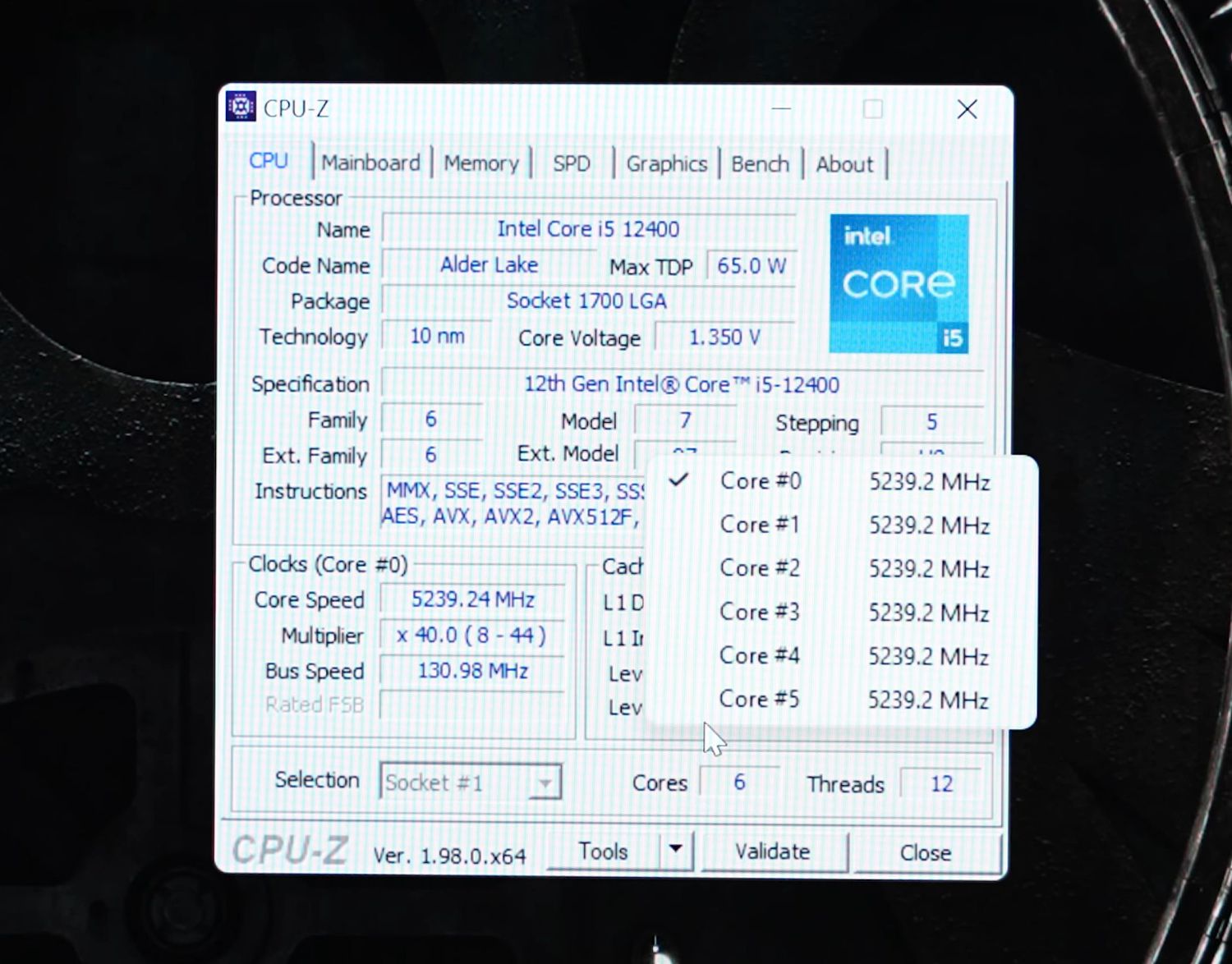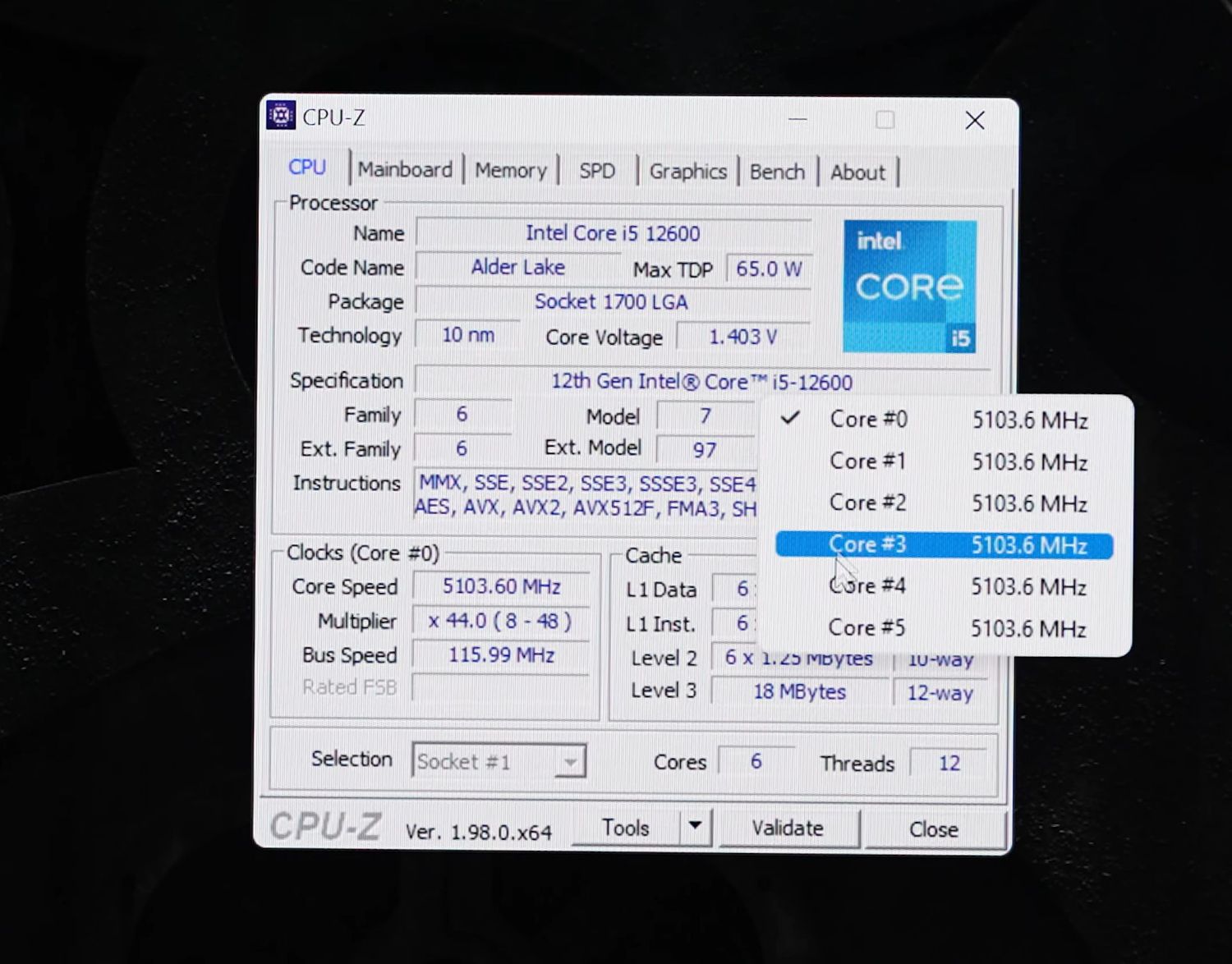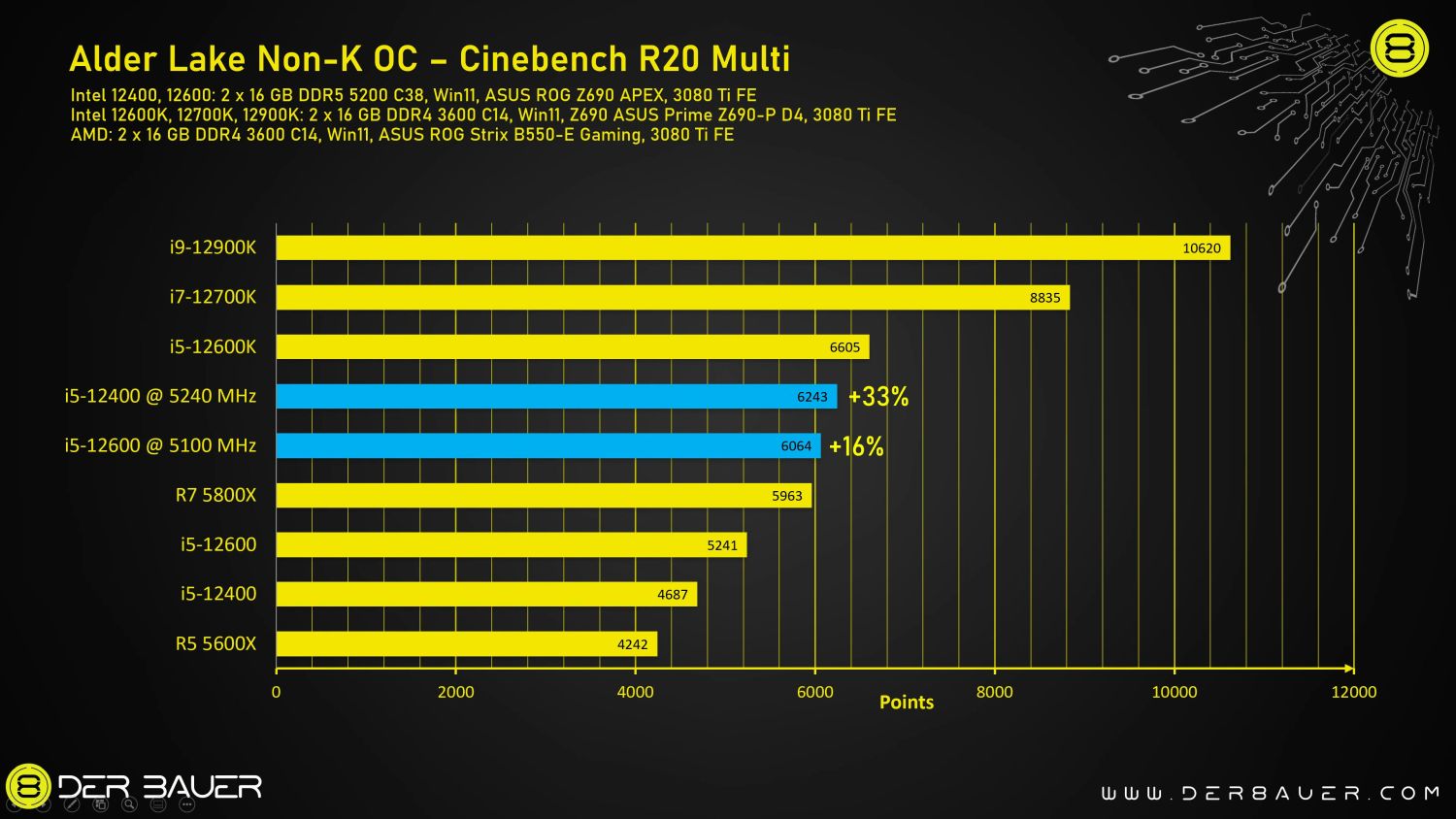Specifically, the CPUs in question are the Core i5-12400 and Core i5-12600. As for how far Der8auer managed to push the two, his attempts were set at 5.2GHz for the 12400 and 5.1GHz for the 12600. More specifically, Der8auer managed to maintain said clockspeeds on all six Golden Cove cores (P-Cores), for each respective CPU. It goes without saying that some of you are wondering how exactly Der8auer actually managed to overclock these “Non-K” CPUs, especially since they technically cannot perform the feat. As it turns out, Intel’s latest Core series CPU architecture no longer depends on a processor’s PL1/PL2 settings, meaning that the German extreme overclocker was able to manually manipulate the Bus Speed (BCLK) of both processors. Further, manually overclocking the BCLK of the 12400 and 12600 is no longer attached to other components, chief among them being the PCIe interface. There is a small catch, of sorts, to overclocking the way Der8auer did. According to him, he believes that the BCLK method of overclocking seems to be limited to just high-end Z690 motherboards; in this case, Der8auer was using an ASUS ROG Maximus Apex Z690 motherboard when he pulled off the feat. Adding on to that, he also confirmed that the option also seemed to be available on the Z690 APEX and Z690 HERO motherboards, provided they were running with the 0811 BIOS. Oh, it should also be noted that this overclocking method will require more voltage, which is why he also increased core voltage for both CPUs to around 1.35V and 1.37V. In regards to their performance, overclocking the two CPUs saw a 33% performance increase with the Core i5-12400, while the Core i5-12600 saw a 16% performance boost, all within the Cinebench R20 multi-core test. Even more impressive? The 12400 is clearly outperforming the 12600. On that note, you can watch Der8auer’s YouTube video if you want to learn the overclocking method. (Source: Der8auer via Videocardz)


